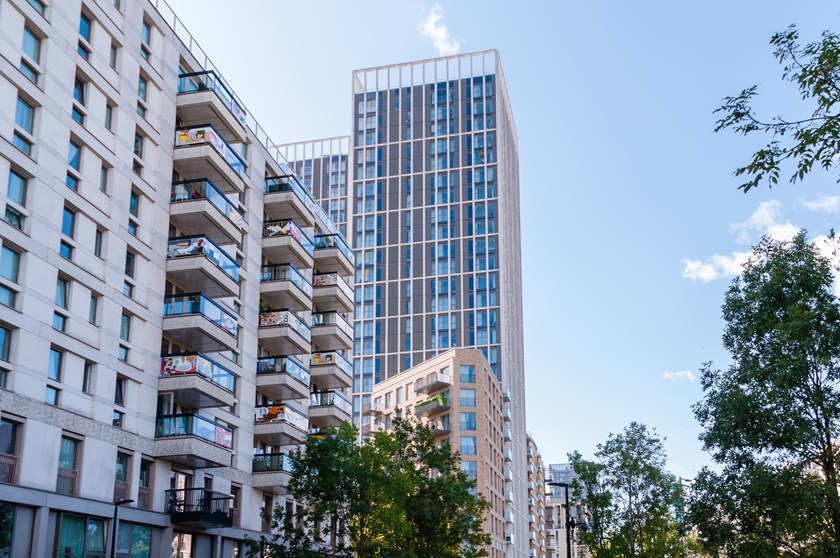The Building Safety Act: a brief introduction
Insight

It seems barely a day goes by without there being a story in the news about some building-related defect, at the moment its RAACS and the ensuing raft of building closures. Not so long ago it was cladding. You will no doubt remember the Grenfell Fire Tragedy and the resulting call to overhaul regulations governing the building / development industry (which were viewed by many as being defective). The Government's answer to this was the long-awaited Building Safety Act 2022 (BSA 2022) which aims to hold developers (and potentially landowners) responsible for fire safety issues in high-rise residential blocks. The BSA 2022 has not been without its hiccups as property owners, developers and occupiers come to grips with the unforeseen consequences of this legislation.
In its quest to find landowners / developers (or, sceptically, any entity still standing with deep pockets) liable for the cost of remedial works, the legislation flies in the face of the well-trodden path which protects those connected with a company who may seek protection from “the corporate veil”. Under the BSA it is possible to make a high court application that the liability of one body corporate can be treated as the liability of another body. This challenges the very notion that the corporate veil provides protection for those associated with a company – and is likely, as claims make their way through the courts – to receive much attention.
Below is a brief overview of the key objectives of the BSA 2022, its application to landowners and developers, and also provides links to some more in-depth commentary prepared by Farrer & Co.
Aim & Application of the BSA 2022
- To ensure the safety of all buildings,
- introduce a Building Regulator – who is responsible for overseeing the safety and performance system of all buildings,
- introduce a new regulatory regime for the management and safety of higher-risk buildings, and
- ensure the safety of residents.
The BSA is wide-ranging and will affect building owners, developers, designers and contractors – essentially anyone who may be involved in the commissioning of building work and who participates in the design and construction process.
Recent updates
Leaseholder Protections
The BSA widens the duties on landlords of “relevant buildings” (buildings at least 11 meters high or 5 storeys) to remediate building defects and to ensure that the required safety standards required by the BSA 2022 are met. This has the potential to result in residents receiving a large bill in respect of remediation works, for example, in respect of defective cladding. The BSA 2022 seeks to protect residents against such costs and regulates the costs that a landlord can recoup from tenants via the service charge in respect of any necessary remediation works; as with most issues around service charges it is likely the parties will have differing views as to what proportion (if any) of the bill they ought end up with, and we envision a significant number of disputes in this area. For more details on how this could affect you see our article Practical Implications of the Building Safety Act 2022.
Remediation Orders and Remediation Contribution Orders
Generally considered part of the leaseholder protections by legal professionals, Remediation Orders and Remediation Contribution Orders are the main enforcement options open to leaseholders, local authorities and building owners (to name a few) under the BSA.
A Remediation Order, as the name suggests, is an order requiring building owners to carry out remediation works to remedy building safety defects. The first decision for a remediation order was handed down by the First Tier Tribunal (FTT) in August. Key to note from this decision is that the claim was largely brought by the leaseholders with minimal professional support. The FTT chose to focus on the desired outcome of the BSA, namely, to protect leaseholders without subjecting them to excessive legal costs. It is anticipated that many groups of leaseholders will be emboldened by this decision and seek to bring their own claims against building owners who are slow to remedy fire safety risks.
Remediation Contribution Orders are orders obtained against third parties to contribute to the cost of any remediation works. Interestingly Remediation Contribution Order can (given the recent decision of Batish & others v Inspired Sutton (1) Inspired Asset Management (2) and Tommy Lyons and James Friis (3)) also be sought against building owners where they have erroneously recovered the cost of remediation works from leaseholders via the service charge.
Whilst funding can be obtained from third parties (such as the Building Safety Fund) or via Remediation Contribution Orders, government guidance suggests that building owners should not delay in carrying out these works. As such, it is anticipated we will see many claims for Remediation Orders and Remediation Contribution Orders in the future.
Building Safety Regulator and Accountable person
The BSA 2022 also introduces two new roles, the Building Safety Regulator (BSR) and the Accountable Person (AP). The BSR is responsible for overseeing the safety and performance of all buildings. The AP is the individual or legal entity that is in charge of carrying out repairs to a Higher-Risk Building (HRB - a building at least 18m in height or seven storeys). More often than not this will be the freeholder or management company, however, where there is more than one accountable person the BSA 2022 also introduces the role of the Principal Accountable Person (PAP). Both the AP and the PAP have key roles and responsibilities in relation to Higher Risk Buildings (some of which will amount to a criminal offence if not complied with).
Management of Building Safety Risks
Among the many duties imposed on the APs and PAPs is the responsibility to manage Building Safety Risks. This includes placing APs under a duty to register HRBs with the BSR. This is in part so the BSR can prioritise which buildings/APs should be asked to provide a building assessment certificate. For further details on what amounts to an HRB and the duties placed on APs and PAPs to register these buildings, see our recent article Building Safety Act 2022: watch out for 30 September 2023.
As of 1 October PAPs and APs are also under a duty to:
- apply for a Building Safety Certificate (when directed by the BSR to do so),
- take all reasonable steps to prevent a building safety risk from materialising,
- prepare a safety case report containing an assessment of building safety risks and provide a copy of the safety case report to the BSR,
- report all safety occurrences to the BSR, and
- keep information and documents about the building's history accurate, accessible, well managed and secure (often referred to as the Golden Thread).
For more information on the duties imposed on PAPs and APs see our recent update here.
Building Liability Orders
As mentioned above, of key interest for litigators is the very notion that the corporate veil may no longer offer a successful shield against claims. It has been commonplace in the construction world for developments to be carried out by SPVs which were subsequently wound up, once the development was complete. Developers would then rely on the long-established principles of company law that the obligations and liabilities of a company are unique to that company alone.
The BSA seeks to address this by introducing Building Liability Orders. Only the High Court has the power to make such an order and even then, only if it considers it “just and equitable” to do so. Nevertheless, Building Liability Orders allow for the corporate veil to be “pierced” by extending liability for construction work to associated entities such as parent or group companies. To date we are unaware of any such claims being considered by the High Court, however, it is generally only considered a matter of time before such a claim is made.
The BSA 2022 remains very much a work in progress, in part because we are yet to see many claims brought under the legislation run through the court and in part because the numerous regulations (which in many ways form the backbone of the provisions) are still in the process of being enacted. Nevertheless, building owners need to understand the increased administrative obligations imposed on them by the Act and the severe consequences of non-compliance. While the Government (and courts) may provide more guidance in the future, it is recommended that building owners ensure they are fully aware of their responsibilities under the new building safety regime.
This publication is a general summary of the law. It should not replace legal advice tailored to your specific circumstances.
© Farrer & Co LLP, October 2023






